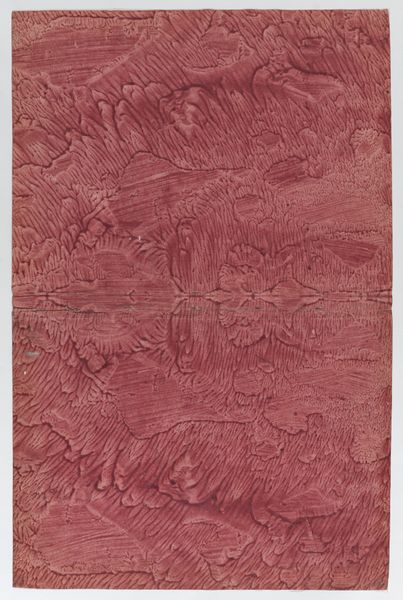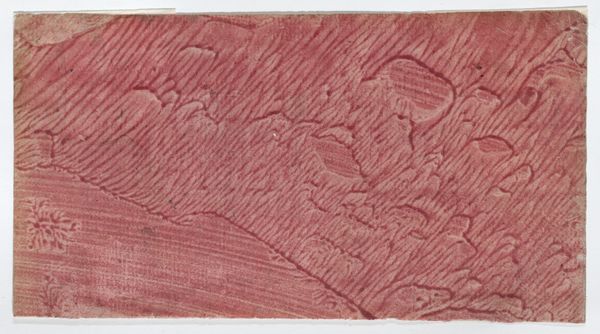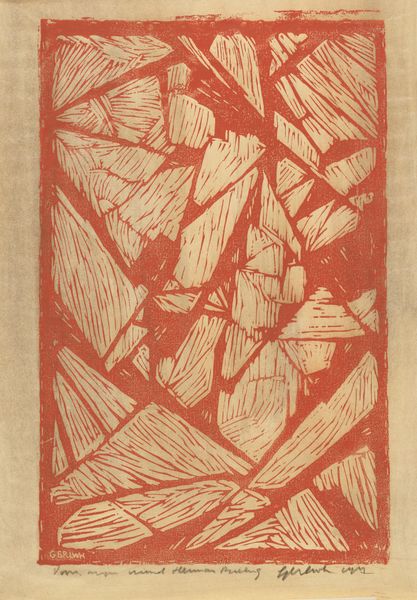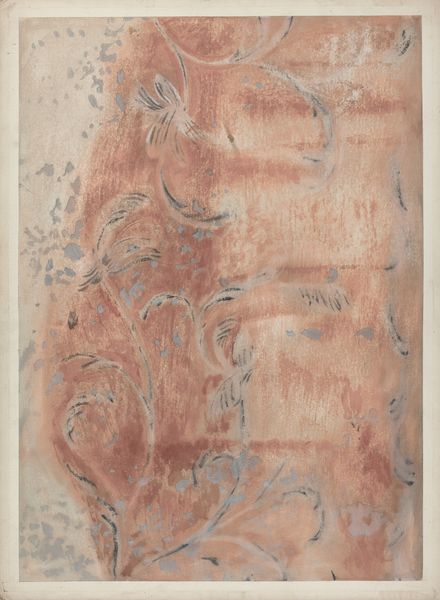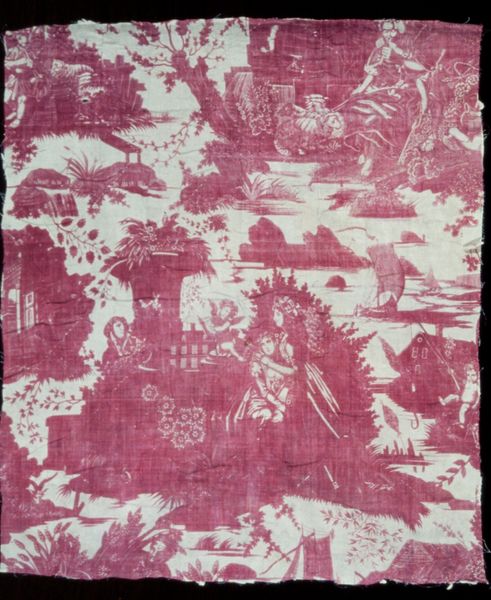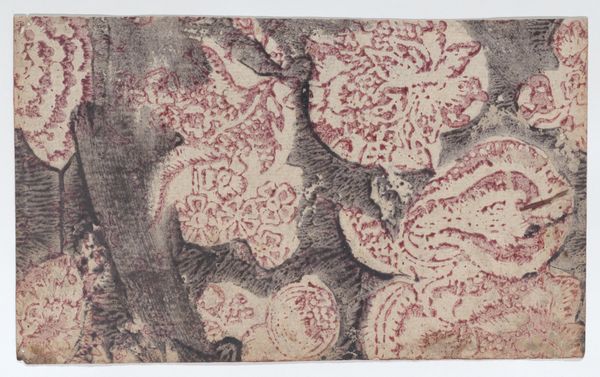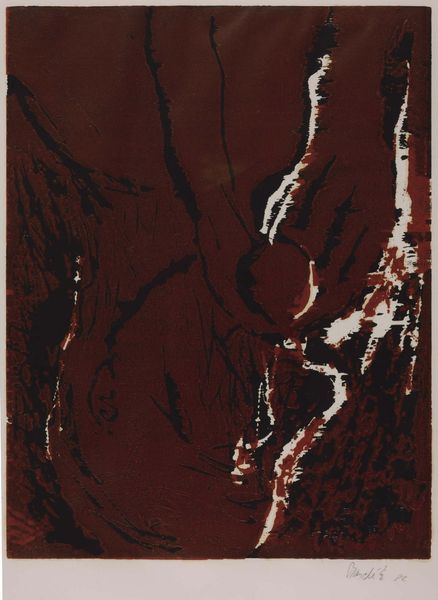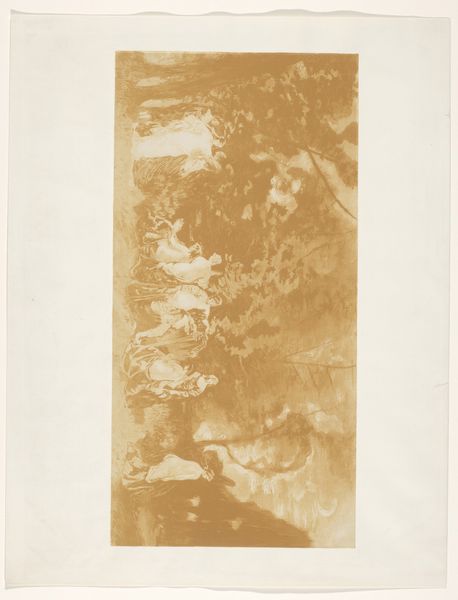
print, textile, woodcut
#
linocut
# print
#
landscape
#
textile
#
organic pattern
#
romanticism
#
woodcut
#
france
#
genre-painting
#
history-painting
Dimensions: 14 x 8 1/2in. (35.6 x 21.6cm)
Copyright: Public Domain
Curator: What strikes me most immediately about this “Toile Fragment” from around the 19th century is its aged texture—a palpable history woven right into its material presence. What's your first impression? Editor: It has this dreamlike quality. A faded martial scene played out in romantic landscape. A clash, certainly, but subdued by time and delicate rendering. A meditation on power, maybe? Curator: It's fascinating to consider how the process of textile production influenced its reception. Mass-produced fabrics brought imagery and narratives to a wider audience, democratizing access to visual culture, if we consider how textiles served then. This one in particular, now at the Minneapolis Institute of Art. Editor: And these repeating motifs. While aesthetically pleasing, they’re reinforcing ideologies. What does it mean to depict violence and power structures within a domestic, commonplace material like toile? This textile is likely French, a nation deeply marked by revolution and colonial ambitions. I wonder how the consumption of such images shaped societal attitudes towards these historical events. Curator: Precisely. Think about the labor involved – the design, the block printing. And the intended use – curtains, upholstery? Objects mediating daily life, subtly shaping perceptions. Consider the material itself—linen, cotton. How was it sourced, who wove it, dyed it? This impacts the artwork and situates it firmly in a larger social fabric. Editor: It also makes me question whose stories get woven into these fabrics. The victors, invariably. But what about the marginalized, the colonized? Their voices are noticeably absent from this seemingly benign domestic scene. And is it benign? Curator: No, it's an invitation to interrogate the layers of production and consumption— the hands that crafted it, the homes it inhabited, and the messages it disseminated through everyday use. A single surviving piece prompts vital discussions about labor, capital, and access to art. Editor: Absolutely. "Toile Fragment" isn’t just a pretty textile remnant. It is a witness and agent in history. An aesthetic object embodying complicated social dynamics that prompts me to examine historical narratives but also our consumption habits. Curator: For me, I appreciate how this textile piece makes us reconsider traditional classifications, bringing questions about art making, craft making, art’s purposes and place within our lives. Editor: It definitely encourages me to view not only history, but everyday objects with critical consciousness, which I feel is key to understanding our position in an interconnected and complex world.
Comments
No comments
Be the first to comment and join the conversation on the ultimate creative platform.
